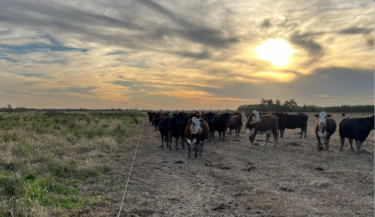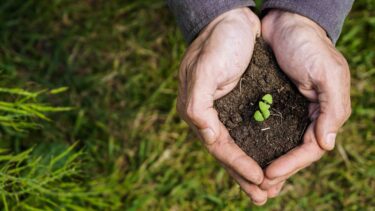
Finding the right balance between farming sustainably and protecting the environment is increasingly important. Recent insights from a study featured in Carbon Pulse, along with innovative methods from our Regenerative Agriculture programmes located in Latin America and South Africa, highlight how adjusting livestock grazing can play a key role in combatting climate change.
The problem and hope with livestock grazing
Research has shown that where animals graze can either add more carbon to the atmosphere or help take it away, depending on how it’s done. Right now, a lot of grazing lands are making things worse because there are too many animals eating too much grass, which hurts the soil. However, this research also found that if we manage grazing better, by controlling how many animals are on the land and matching it to the weather and soil, we can use these lands to store a lot of carbon. This could be as helpful as the carbon stored by forests growing back over 30 years.
What our regenerative agriculture projects do differently
In our SARA programme in Latin America, Ovis21 and Ruuts, our partners on the ground, use a comprehensive approach with their farmers that includes making grazing plans that change as needed. These plans make sure there’s enough resting time for the land and involve both long-term activities (soil sampling, water filtration, species counting and identification) and short-term checks (visual observation on multiple biodiversity indicators). From these short-term checks, they give a score from -100 to +100. If a place gets scored above 20, it means the soil is getting better at storing carbon.
If the grazing is managed well — meaning animals don’t stay in one place too long and the land gets enough time to recover — the land acts like a “carbon pump.” This means the grass and other plants pull more carbon from the air, which also helps feed underground life like microorganisms and fungi.
Parallel to the efforts in Latin America, the AgriCarbon Programme in South Africa promotes sustainable farming through innovative financial incentives. The project pays farmers for adopting improved agricultural land management practices. They work to build healthy soils, reduce erosion, and promote plant and animal diversity. By building healthy soils, regenerative agriculture can sequester carbon from the atmosphere.
Why this matters and what’s next
Combining what we’ve learned from the study with the insights from our Regenerative Agriculture projects shows that to tackle climate change through farming, we need smart, science-based methods focused on making the soil healthy and capable of storing carbon. This is a big deal for people who make laws, care about the environment, and work in farming. By using these better grazing methods, we can fix some of the damage done by overgrazing, help with climate change, and make farming sustainable for the future.
Also, as more people see the importance of healthy soil in storing carbon, there’s more interest in supporting these kinds of farming practices through research, money, and laws. This could help bring more attention and resources to farming methods that are good for the climate.
We are the world’s leading purpose driven, digitally enabled, science-based activator. And always welcome inquiries and partnerships to drive positive change together.




